- Offensive Techniques & Strategies
Defensive Rebounding
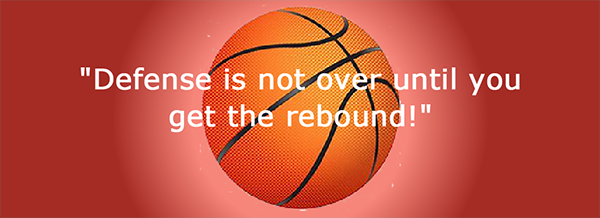
What to Discover or Recall . . .
The importance of rebounding defensively cannot be over emphasized.
Defensive rebounding is a coordinated team effort.
A rebound on defense is equivalent to a made shot on offense.
A team can play tremendous defense and force a bad or rushed shot, but this defensive effort will be wasted if the offense is allowed to rebound the missed shot.| Boxing Out | Ballside | Helpside | Low Post | Special Situations | Shot Blocking |
Boxing Out - A Total Team Effort
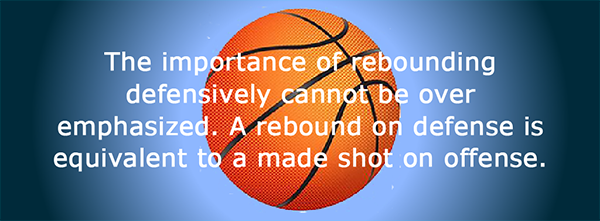
Defensive rebounding is a coordinated team effort, and every player must realize that it is just as important to box out and prevent their opponent from getting the rebound as it is to obtain the rebound. Therefore, defensive rebounding is one of those situations in basketball where it's not the number of times you do, but it's the time you do not that counts. This means that the defenders block every offensive player's path to the basket and ball on every shot during a game. This is especially true for the shooter since they know where the ball is going as soon as it leaves their hand.

Ballside Rebounding - Boxing Out

In defensive rebounding, to be successful, every offensive player's path to the basket and ball must be blocked. As a result, boxing out an opponent is just as important as obtaining the rebound. On a shot, if only one player does not box out, then the other four player's box out efforts are wasted.
Boxing Out Techniques
Since defensive rebounds requires a total team effort, players must communication and yell "SHOT" (Box Out) on every opponent shot. Communicating by yelling "shot" triggers and initiates the box out action. This especially important in case a defender does not see the shooter shoot the ball.
Box out by using a simple "Hand to Shoulder - Butt to the Gut" technique. As the shot leaves the shooter's hand, it is imperative that defenders take the initiative in attacking the potential offensive rebounder rather that to react. To do this, the defender must first locate and make contact by extending a hand to their opponent's shoulder. This should be a glancing blow. Once contact is made, the defender then executes a drop step, "Butt to the Gut" sealing off the opponent's path to the basket.
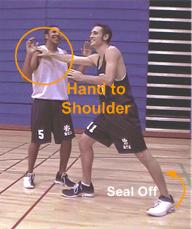
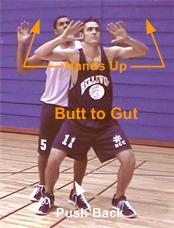
Strive to maintain inside position by spreading out with both hands high and pushing back against the opponent's thigh. This will not only prevent getting pushed too far under the basket, but will also straighten out and lock the opponent's leg which will prevent them from being able to jump.
Want the Ball
In boxing out players must develop an attitude as well as an instinct for the ball. They must play mentally strong and want the basketball. Rebound by grasping the ball with two hands. Protect ball by chining ball with elbows out. If possible, players should make a quarter turn before landing so that you can see the court without pivoting prior to making the outlet pass.
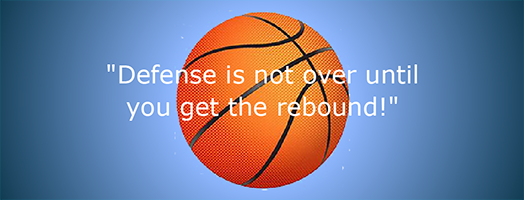

Helpside Rebounding - Hit & Go Get!
Although 70% of missed shots will rebound to the opposite side of the basket, most coaches do not teach helpside rebounding techniques. In fact, almost all rebounding break down drills consist of players being paired up next to each other. However, during a game players can be expected to be in a helpside support position on shots from 40% to 60% of the time.
Boxing out on the helpside differs from boxing out on ball side in that the defender is sagged off in a Helpside I support position and stance. Therefore, helpside boxing out requires the defender to locate and close out during "Flight Time" in order to establish contact. In initiating contact and attacking the offensive player using the "Hit (box out) & Go Get (get the rebound)" technique, it disrupts the offensive rebounder timing and aggressiveness.
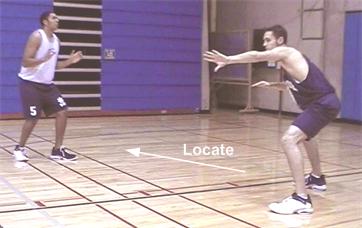
When in a sagged off Helpside position, defenders must locate their opponent by take a stepping out. If/when the opponent drops back on defense and does not got to the offensive boards, after locating, the defender should turn and rebound the ball.
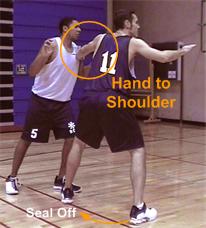

However, if opponent is aggressive and attacks the offensive boards, defenders should act first and box out using the "Hand to Shoulder - Butt to the Gut" technique to bock their opponent's path to the basket. In this case, blocking the opponent out is more important than obtaining a rebound. If the opponent is a prolific offensive rebounder, facing guarding becomes a viable option. In face guarding, the defender sacrifices the rebound to maintain an aggressive face to face position with both hands up preventing any chance for an offensive rebound.
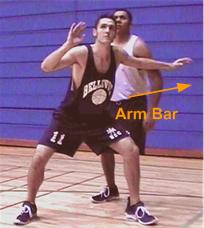
If the offensive player is passive and watches the ball, then the defender can just use an "Arm Bar" to block their path to the basket. In stepping out an attacking offensive rebounders, defenders will establish a rebound perimeter further away from the basket which will eliminate any athletic opponent's over the back tip ins or tip dunks. Also, by being further away from the basket, since a longer defensive rebound will be secured, it is much easy to get out into lanes and push the ball in early offense.

Rebounding in the Low Post Area
When defending a low post in a 3/4 pass denial or full front position, the defender must use offensive rebounding techniques to box out and establish inside position. This requires the post defender to be extremely active during "Flight Time."
Arm Over/Step Over
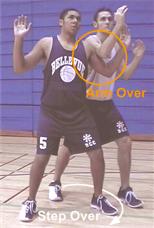
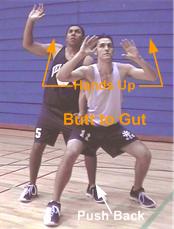
Against a passive post player, one that watches the flight of the ball, the defender can simply step in front or deploy an Arm Over/Step Over move to box out and establish inside rebounding position.
Spin Move

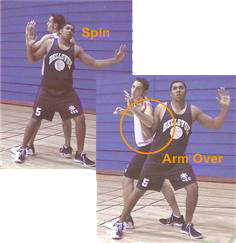
 >
>When the offensive post boxes out or fights and prevents the "Arm Over/Step Over" move, the defender should immediately counter by quickly spinning back in the opposite direction and executing the Arm Over/Step Over move with the opposite arm.
Outlet Passes
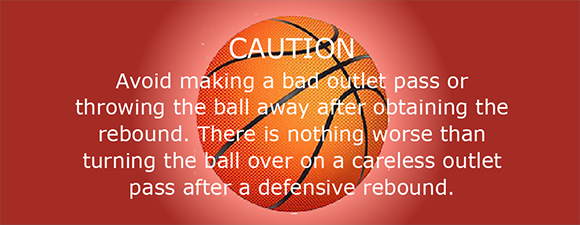

Special Rebounding Situations
Special defensive rebounding situations that must be addressed include: Boxing Out on Free Throws, Last Second Shots, An Exceptional Rebounder, and Offensive Rebounds
| Free Throws | Last Second Shots | Exceptional Rebounder | Offensive Rebound Stop |
Free Throw Situations
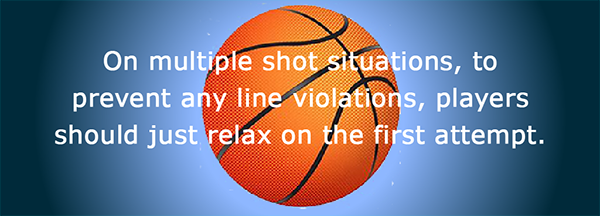
Boxing out on free throws is crucial. You can never afford to give up an offensive rebound on a missed free throw attempt. Allowing an offensive rebound after a missed free throw is a "Really Big Play." It can cost a team the game or even a championship.

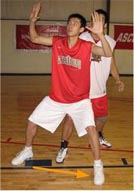
On free throws, it is very important that the defenders stand with both feet together and step up the lane (not into the lane). Having the feet together allows the players to step further up the lane. Players must also keep their hands up in elbow high position ready to rebound
CAUTION: Once inside position is established, the defender must be careful not to get push too far under the basket. Maintain inside position by spreading out with both hands high and use your butt to push the offensive player away from the basket.
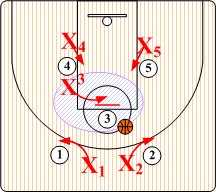
Players must communicate to make sure that the shooter is boxed out. Games can be lost because of the free throw shooter not being boxed out. Boxing out the free throw shooter, can also distract their concentration.
Pinching Against a Good Rebounder
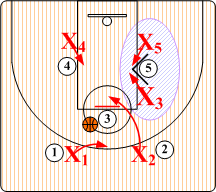
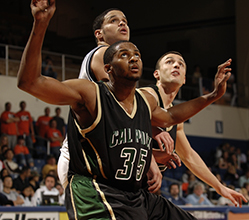
Players have the option of pinching (double team) against a really good offensive rebounder. Players stand next to the offensive rebounder with both feet together and hands up in elbow high position. As the ball leaves the shooter's hand, both players step together boxing out the opponent.
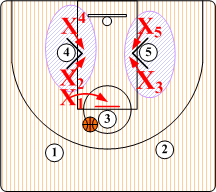
It is highly recommend putting as many defensive rebounders on the line as rules permits. In games where the rules allow five defensive players on the lane line during a free throw attempt, it provides for pinching to occur on both sides.
Early Push Off a Free Throw Situation
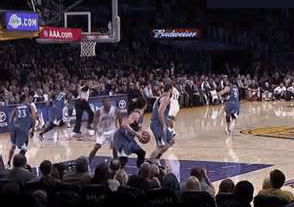
Do not forget to install and practice an early push out of a free throw situation. Players need to know exactly what their assignments and are responsibilities for both a made and missed free throw. When executed to perfection early push off a free throw usually ends up with an easy shot off an out numbered situation.
To Learn More about Early Push off a Free Throw Situation - Click Here

Last Second Shots
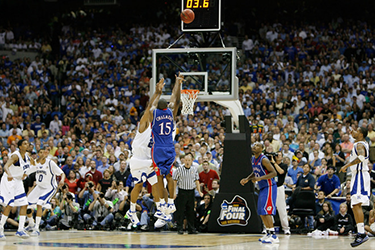
On last shot situations, the majority of games are won on putbacks than on made shots. Therefore, on last shot situations, it is imperative that all defenders aggressive box out and prevent any offensive rebound instead of watching the flight of the ball to see if it is going to be made or not.

The Exceptional Offensive Rebounder
First of all, defensively, do not front a great offensive rebounder in the low post area. If/when the defender is mismatched and cannot box out their opponent one on one, then "Face" guarding the offensive rebounder becomes a viable option. In face guarding, the defender sacrifices any chance of getting the rebound to order to prevent their opponent from getting an offensive rebound. On the shot, the defender assumes an aggressive chest to chest with both hands up preventing their opponent any chance for an offensive rebound.
Erasing Offensive Rebounds
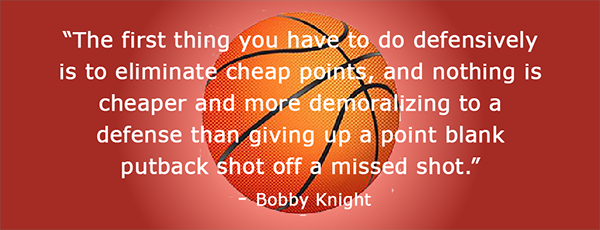
A team can play tremendous defense and force a bad or rushed shot, but this defensive effort will be wasted if the offense is allowed to rebound the missed shot. Therefore, whenever an offensive rebound is allowed, it is extremely important for the defense to increase their defensive intensity in an effort to come up with a defensive stop (turnover or defensive rebound).
Stepping up and "Erasing" an offensive rebound is a "Really Big Play" in basketball. Offensive rebounds don't hurt unless the opponent scores. Any time a defensive stop occurs after an offensive rebound it cancels out or erases the rebound.

Shot Blocking
Shot blocking is usually a result of a defensive error on the part of a peripheral defender. Therefore, poor defensive teams will have a tendency to have higher shot blocking numbers. It is a definite advantage to have a dominate shot blocker. Psychologically, it discourages players from driving to the basket disrupting the offensive flow. However, this requires a player with exception athletic jumping ability and/or size. Therefore, players should not attempt to block shots, unless they have the physical size and ability to block shots. Instead they should stay down and establish good rebounding position.
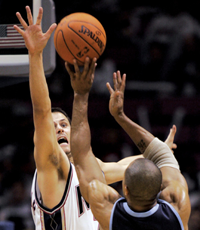
Shot blocking requires anticipation, timing, and explosiveness (quick jumping ability).
If a player does possess shot blocking capabilities, be sure to block the shots to themselves or a teammate. A blocked shot that goes out of bounds is of no value.
In blocking a shot a player must jump straight up. Leaning or jumping forward will end up with a foul being called.
Do not reach across body. Block with the hand closest to the shooter's hand (defender's left hand to shooter's right hand).
Bill Russell, undoubtedly the most effective shot of all time, blocked entirely with left hand. However, he was left handed and most of the shooters were right handed.
-
When blocking with the same hand, to eliminate reaching, the defender must assume a position to the outside shoulder of the shooter's shooting hand.
Do not swat the ball. Keep the arm straight up and control the ball with the hand and wrist. Swing at the ball will most likely end up with a foul being called on the follow through even when the shot is block.
Keep fingers extended wide apart.
Block the ball low, as it leaves the shooter's hand especially on layups. Blocking a shot on its downward arc results in a goal tending violation.
When helping out on drives to the basket, it is much more wiser to take a charge than it is to block a shot.
On weakside closeouts do not ever run out at the shooter and try block the shot. This will result in either the offensive player faking the shot and driving to the basket or fouling the shooter.
Closeout quickly with both hands up using quick chatter steps to stop on balance. Stay down and box out the shooter. They are the most dangerous offensive rebounder since they know where the ball is going as soon as it leaves their hand.

The chances of making a three point shot are less than 33%. In the recent men's NCAA Tournament, four games and all hopes of a championship were lost by fouling shooters on the last shot. Except for a missed free throw, it could have been five games.
Blocking Layups
Pursuing and catching a dribbler from behind to block or disrupt a shot is a "Really Big Play." A Really Big Play (RBP) is one of those situations in basketball where a single action can make the difference in the outcome of the game.

In blocking layups, block low using the hand closest to the shooter. In most cases the ball will go out of bounds off the shooter. When players attempt to block high, it usually ends up in a foul or being out of position for the rebound on a missed shot.
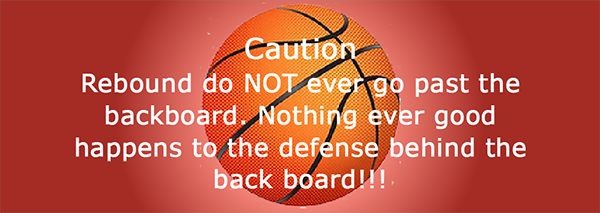

In Review
Defensively, it is just as important to box out and prevent their opponent from getting the rebound as it is to obtain the rebound.
Boxing out requires different techniques for the shooter, ballside, helpside, post and special situations.
The shooter is the most dangerous rebounder on the court.
Helpside rebounding requires the defender to step out and locate during "Flight Time" in order to box out.
When defending a low post, the defender must use offensive rebounding techniques to establish inside position and box out.
Players should not attempt to block shots, unless they have the physical size and ability to block shots.
There is nothing worse than turning the ball over on a careless outlet pass after a defensive rebound.
On last shot situations, the majority of games are won on putbacks than on made shots.
Allowing an offensive rebound after a missed free throw can cost a team the game or even a championship.
Once proper boxing out techniques are taught and learn, they should become an important ingredient of every drill, every scrimmage, and every game throughout the season.

Drills for Skills
Basketball is a game of habits. Once proper boxing out techniques are taught and learn, they should become an important ingredient of every drill, every scrimmage, and every game throughout the season. Select desired drill below to View and/or Print:
Learn more Rebounding Basics - Click Here
For Offensive Rebounding Skills & Techniques - Click Here
Return to Player Development - Click Here
Return to Coaching Strategies - Click Here
Return to HoopTactics - Click Here>
© 2026 HoopTactics All Rights Reserved.
